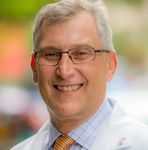Shady Grove Fertility (SGF) Presented Key Findings at the 2020 American Society for Reproductive Medicine (ASRM) Scientific Congress & Expo
←
→
Page content transcription
If your browser does not render page correctly, please read the page content below
MEDICAL UPDATE
Shady Grove Fertility (SGF) Presented Key Findings at
the 2020 American Society for Reproductive Medicine
(ASRM) Scientific Congress & Expo
Shady Grove Fertility’s (SGF) physician-scientists presented exciting, new research findings during the 2020 American
Society for Reproductive Medicine (ASRM) Scientific Congress & Expo as part of the practice’s commitment to
advancing knowledge and improving assisted reproductive technology (ART) treatment outcomes. Remarkably, all 17
abstracts submitted by SGF to the ASRM meeting’s scientific program committee were accepted for presentation.
“
Hosted virtually this year, the 2020 ASRM
Scientific Congress and Expo took place
October 17-21 and welcomed nearly 10,000
attendees from 94 countries. During a SGF believes that it is our responsibility to give
time when much of the world is connected
back to our patients by conducting high-quality
from a distance, this year’s theme of
Dynamic Collaborations in Reproductive
Medicine helped close the physical divide.
For the past 29 years, the physicians
at SGF have demonstrated a sustained
commitment to clinical research and
to educating the next generation of
research and by training the physicians who
will take care of them in the future. The findings
of our studies enable us to provide the best
possible information and treatment outcomes to
“
reproductive endocrinologists. SGF is
one of only a few private practice fertility
those struggling with infertility.
centers in the country to employ a full- — Kate Devine, M.D., Director of Research
time dedicated research team, which
operates under Director of Research,
Kate Devine, M.D.
Featured SGF Physician Research Team
KATE DEVINE, M.D. ERIC A. WIDRA, M.D. NANCY DURSO, M.D. JEANNE E. O’BRIEN, M.D. CORI TANRIKUT, M.D. PAUL SHIN, M.D.
REFER WITH CONFIDENCE 888-348-5599 FLORIDA | GEORGIA | MARYLAND | NEW YORK | PENNSYLVANIA | VIRGINIA | WASHINGTON, D.C.
DECEMBER 2020Total Motile Sperm Count Large Data Set Confirms How Total Motile Sperm Counts (TMSC) during
(TMSC) Sheds Important Intrauterine Insemination (IUI) Affects Pregnancy Rates
Light on Likely Intrauterine SGF Researchers: Samad Jahandideh, Ph.D., Sharon K. Shipley, M.S., Jeanne
E. O’Brien, M.D., Paul R. Shin, M.D., Kate Devine, M.D., and Cigdem (Cori)
Insemination (IUI) Tanrikut, M.D.
Pregnancy Rates
Research Contributors: Akhil Muthigi, M.D., Lauren A. Bishop, M.D., and
Firoozeh K. Naeemi, BS
THE STUDY
Intrauterine insemination (IUI) is one of the most basic forms of fertility treatment and has provided many who have
struggled to conceive with the ability to build their families. Compared with more advanced treatments such as in
vitro fertilization (IVF), IUI is less expensive but, in general, is associated with lower pregnancy rates.
At SGF, a semen analysis is part of any couple’s initial fertility work-up. This helps determine if male factor infertility
may be playing a role in the couple’s inability to conceive. Before an IUI cycle, most patients will have a sperm wash to
prepare the sample for insemination. At this time, the total motile sperm collected are counted. The sperm count can
range from nearly zero to tens of millions.
The SGF research team reviewed 92,471 stimulated clomiphene citrate,
letrozole, and/or injectable gonadotropin IUI cycles performed at a
When considering expected single location from 2002 through 2018. From these insemination
total motile sperm count for cycles, the research team evaluated the relationship between TMSC
an IUI, two important variables and clinical pregnancy. The primary outcome was determined by
need to be accounted for: successful clinical pregnancy reinforced by ultrasound confirmation
of an intrauterine gestational sac.
1. Total motile sperm count from the
baseline semen analysis, and THE RESULTS
IUI pregnancy is optimized with TMSC ≥9 million, below which rates
2. The impact that sperm washing gradually decline. The most optimal success from IUI was seen above
(a procedure in which a sperm ≥9 mil post-wash TMS. Although rare, pregnancies were achieved with
sample is concentrated that is TMSCPatients Who Have
Conceived Using Just Over One-Third of Patients Interested in Embryo Donation
Complete Embryo Donation
Donated Eggs Are More SGF Research Team: Samad Jahandideh, Ph.D., Kate Devine, M.D.
Likely to Give Back by Additional Contributors: Olivia Carpinello, M.D., B. Mitchell Bodily, M.D.,
Donating Embryos
Morine Cebert, Ph.D., RN, Joshua C Combs, M.D., Micah J. Hill, DO, and Alan H.
DeCherney, M.D.
THE STUDY
The path to parenthood is not always a direct one, especially for two FOR YOUR PATIENTS
important patient populations: those who elect to donate embryos and An impressive 43% of embryo
those who endeavor to achieve parenthood by receiving a donated embryo.
transfers with donated embryo(s)
SGF’s growing and successful embryo donation program is leading the way
to provide the data to support these patients. Embryo donation represents result in successful pregnancy.
a highly effective and efficient option for women of advanced reproductive
age who are unable to conceive with their own eggs, especially those PATIENTS WHO DONATED EMBRYOS
choosing to conceive without a partner.
The studies sought to elucidate factors that lead patients to donate
embryo(s) or to receive donated embryo(s), as well as to better understand
cycle outcomes using donated embryos. Patients at a single infertility 48%
practice who expressed interest in embryo donation from 2015 to January
2020 were referred to the SGF’s embryo donation team.
Criteria for embryo donation included: 52%
• embryos vitrified onsite at blastocyst • embryos were accepted
stage on day 5 or 6, if associated clinical data
• egg ageObese Patients are Less Likely to Pursue Fertility Treatment and Take a Longer
Time to Do So, after Initial Infertility Consultation
A Healthy Weight SGF Research Team: Samad Jahandideh, Ph.D., Kate Devine, M.D., and
Increases the Odds of Nancy Durso, M.D.
a Healthy Pregnancy
Research Contributors: Anne E. Martini, DO, Jaclyn Kwal, M.D., Alan H. DeCherney,
M.D., and Micah J. Hill, DO
THE STUDY
Weight can often be a sensitive topic, but it is important to address, not only because the rate of obesity is increasing
but also because it can have a significant impact on patients’ – men and women – overall health and ability to
get pregnant.
Just as serious medical diagnoses like diabetes, A 5-10% weight loss can help a woman
hypothyroidism, and hypertension must be under
resume regular ovulation.*
control before pregnancy, so must weight.
*If her inability to conceive is associated with weight alone.
In considering the impact of obesity on maternal and
fetal health, evidence-based body mass index (BMI)
thresholds for fertility treatment are being more commonly implemented. BMI measures the percentage of body fat
based on height and weight. A normal (or ideal) BMI falls between 19 and 25.
SGF’s research goal was to evaluate drop-out rates and time to first treatment by BMI in patients presenting for
infertility care. During this study, charts of patients presenting for infertility care in the first 3 months of 2016 were
reviewed to allow 4 years of follow up. Data collected includes age and BMI at initial consult, time to first treatment
(if pursued), infertility diagnosis, treatment type, and cycle outcome.
THE RESULTS
Research found that obese women are less likely to proceed with fertility treatment after an initial consultation with a
fertility specialist and that there is a longer average duration before treatment begins for such patients.
From the study, 2,061 patients met study inclusion criteria, 60.4% of which initiated treatment after initial consult.
The mean age and BMI were 33.7 years and 28.2 kg/m2, respectively. Infertility diagnosis was listed as an-/oligo-
ovulation for ≥18% of obese vs ≤12.8% for non-obese women.
Drop-out rate and time to treatment increased linearly with BMI, however underweight patients also had longer time to
treatment. If a treatment cycle was pursued, rates of clinical pregnancy decreased as BMI increased.
All Under-weight Normal Over-weight Class 1 Class II Class III
(IMPACT OF WEIGHT ON MALE FERTILITY
FOR YOUR PATIENTS
A higher BMI in men can affect male fertility
in important ways: With more effective strategies to achieve healthy
weight loss, patients can improve fertility treatment
1. Obesity can cause changes in hormone outcomes and enable healthier pregnancies and
production and may impair the man’s ability
to make sperm on a regular basis. These
delivery for mom and baby. SGF offers virtual nutrition
changes can also affect sex drive and erectile counseling that is covered by most insurances.
function. Patients are advised on setting realistic goals to
support their fertility and a healthy pregnancy.
2. Obesity can lead to warming of the
scrotum. If the scrotal temperature increases To schedule, call 301-610-7753.
by 1 or 2 percent, it can impact sperm
production or survival.
Sperm takes about 74 days to mature, which
means that men who lose weight or make
positive lifestyle changes only need to wait
about 3 months before seeing improvements Treatment Guidelines for Female Patient BMI
in sperm quality—and an increase in their
IVF IUI
chances of reproductive success.
Target BMI Less than 40 Less than 44
Convenient Access for Patients with 38 Locations across D.C., FL, GA, MD, NY, PA, and VA.
A Preferred Choice among Patients and Referring Providers.9600 Blackwell Road, 5th Floor
Rockville, MD 20850
SHADY GROVE FERTILIT Y
Refer Your Patients with Confidence
1-888-348-5599
MEDICAL UPDATE
ASRM 2020 Scientific Congress & Expo
SGF Research Informs How to Safely Improve Outcomes for Your Patients
Look inside for an in-depth view into some of SGF’s recent research
presented at the American Society for Reproductive Medicine’s
(ASRM) 2020 Scientific Congress and Expo. Our commitment to
research and innovation leads to safer and more efficient ways of
helping your patients overcome infertility.
TOP FINDINGS
Large Data Set Confirms How Total Motile Sperm Counts (TMSC)
during Intrauterine Insemination (IUI) Affects Pregnancy Rates
Just Over One-Third of Patients Interested in Embryo Donation
Complete Embryo Donation
Obese Patients are Less Likely to Pursue Fertility Treatment and
Take a Longer Time to Do So, after Initial Infertility Consultation Findings insideYou can also read



























































